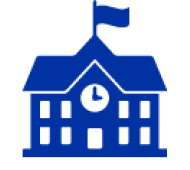History of the Papua New Guinea Sector
The Lasallian footprint began in PNG with a brief mission of five German Brothers in German New Guinea in 1914. With World War 1, the venture finished in 1921. Bishop de Boismenu, Old Boy of the Brothers in France, and in charge of the Papua Protectorate, asked several times for Australian Brothers. Br. Benignus acceded in 1946, and on 19 January four “greenhorn” missionaries came to learn Melanesian ways. The 83 boys at Bomana, out of Port Moresby, quickly assessed the Brothers in affectionate Australian slang as “b------". Br. Patrick Howard, Director was the ‘big b—'; Br. Anthony ‘a skinny b—'; Br. Celsus ‘a smart b—‘; Br. Lucian ‘a dangerous b—‘. Much time was spent actually building the school! One core job was to prepare catechists as well as teach basics.
Disappointedly, the four pioneer Brothers were moved, in 1948, to Yule Island, off the coast, where the Vicariate was based. Tractor and bulldozer were used by these Brothers, with logs sawn and milled from the mainland, to build a school, house and roads to make a mission ‘home’. It was very spartan living. They again taught basic subjects and trained catechist teachers for the villages (over 30 by 1955); youths gained Queensland teaching certificates by 1956, and students began secondary studies by 1962. Fruit-fruits for the PNG Brothers was Br. Peter Keaga who joined the Institute in 1951.
A boarding school, called Mainohana, was begun at Bereina, 160 km from the capital, in 1958. By 1966, when Yule Island became a co-educational Teachers’ College, the secondary classes transferred to Mainohana. Two years previously, Brothers returned to start a secondary boarding school at Bomana which became the centre of their successful operations in PNG. Br. Patrick Howard, an original pioneer, was Principal.
Another secondary school was taken over in 1969 at Kondiu, in the Highlands. Despite the dangers of inter-tribal violence for students, it prospered. The Sector extended its influence greatly when, from 1968, Br. Justin Joyce became ‘Mission Education Officer’ for the Capital, effectively the executive director. Two other Brothers had similar positions in PNG Catholic education, recognising the Lasallian reputation.
The Brothers themselves attracted vocations; by 1970 there were 8 novices in Australia, but the gulf between cultures – socially and in mindset – meant that most left the Institute. The training was transferred to Papua, with careful planning and personnel. By 1980, there were 6 local Brothers studying & 6 novices. Another significant development was the Brothers taking on the administration of the Primary Teachers’ Training College in Mount Hagen in the northern highlands in 1979. A commitment at Tapini (1986-94) and Mun (1997-98) was made, but the loss of local Brothers continued with their very different cultural priorities in living religious life. One outstanding success was the development, especially by Br. Ignatius Kennedy, of the Lasallian Family network, now numbering several hundred remote village and town teachers, who have enthusiastically embraced the spirituality of John Baptist de La Salle – the ‘human and Christian education of youth, especially the poor’.
In 1993, the Lasallian ethos of serving struggling, disadvantaged youth was underlined in taking over Hohola Youth Development Centre, (now La Salle Technical College), working with male & female settlement youth in a trades setting. Setting up a lay-led Lasallian Jubilee Secondary School, also in Boroko, NCD, was also answering important needs in Papua New Guinea. Both were promoted by Br. Denis Loft, with the support of all Brothers. At its peak, there were upwards of 20 Australian Brothers in the Sector; other Brothers have come from the Philippines, India, England, New Zealand and Pakistan. The ‘shared mission’ of a global Institute is vibrantly alive in a Melanesian culture.





